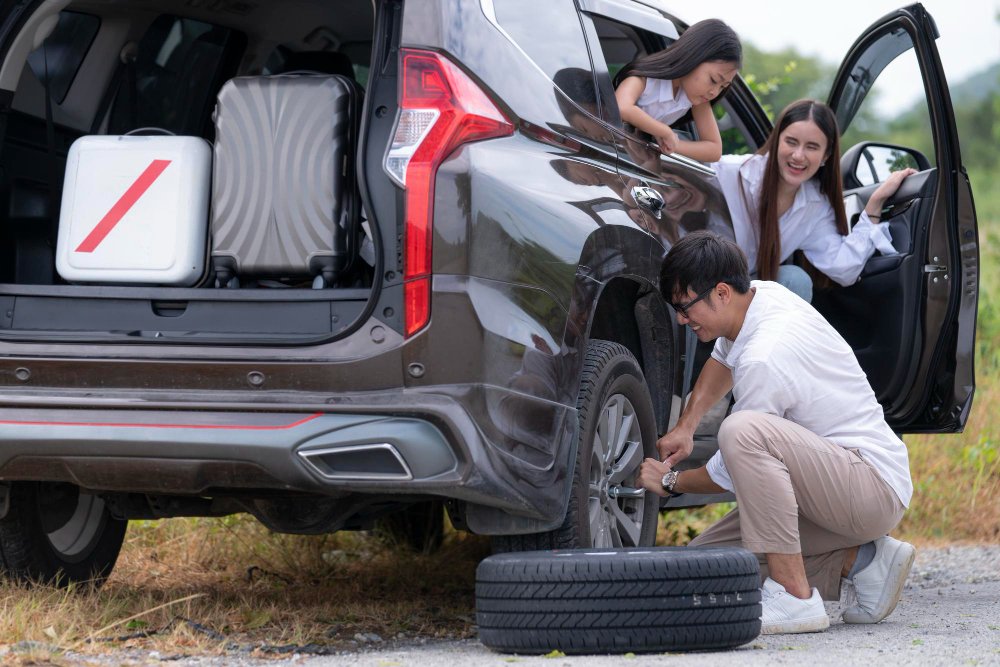In recent years, a notable trend has emerged across Tanzania’s automotive landscape. Mechanics from Dar es Salaam to Mwanza are increasingly recommending and working on Japanese used cars from China, rather than directly from Japan or other markets.
At first glance, this might sound unusual. After all, Japan has long been the gold standard for quality second-hand cars. Yet, there’s a practical logic behind this shift that speaks volumes about the evolving dynamics of vehicle maintenance, affordability, and spare parts availability in Tanzania.
The Growing Popularity of Chinese-Sourced Japanese Cars
Tanzania’s car market is deeply tied to imports, with thousands of used vehicles arriving each year from Japan, Singapore, the UAE, and increasingly, China. What many Tanzanians may not realize is that China imports millions of Japanese vehicles, particularly those from Toyota, Nissan, and Honda, which are later re-exported to African markets.
These vehicles are often identical in design and mechanical structure to those shipped directly from Japan. However, what makes them stand out is how easily mechanics can match and replace their parts. This advantage has made Chinese-sourced Japanese vehicles particularly appealing to both buyers and technicians across Tanzania.
Easier Parts Matching: The Core Advantage
One of the biggest challenges Tanzanian car owners face is finding compatible spare parts, especially for older or less common models. Mechanics often spend hours searching through local shops or second-hand markets, only to find mismatched components.
Chinese-sourced Japanese cars solve much of this problem. Because these vehicles are part of China’s massive domestic car ecosystem, parts are widely available, affordable, and standardized. Moreover, mechanics can easily identify, order, or cross-match parts for engines, transmissions, suspensions, and electronics, saving both time and frustration.
In practical terms, when a Toyota Axio from China arrives in Tanzania, a mechanic knows they can easily find the right air filter, brake pads, or control arms locally, or import them at a low cost from Chinese suppliers. This compatibility streamlines maintenance and significantly reduces downtime.
Japan’s Precision Meets China’s Accessibility
Another reason mechanics appreciate these vehicles is the unique blend of Japanese engineering quality and Chinese parts availability. Cars built by Toyota, Honda, and Nissan are known for their reliability and precision. Yet, in markets like Tanzania, that reliability can only be sustained if maintenance is affordable and straightforward.
China, as the global hub of auto manufacturing, produces a vast array of OEM (Original Equipment Manufacturer) and aftermarket parts for Japanese vehicles. This means that even if a car was originally assembled in Japan, the parts it needs for repair or upkeep can be easily sourced through Chinese networks.
To mechanics, this represents the perfect combination of Japanese durability and Chinese convenience.
Cost-Effective Repairs and Maintenance
For most Tanzanian drivers, maintenance costs are a key factor in choosing a car. Mechanics understand this deeply, and they’re quick to recommend vehicles that are both economical to maintain and easy to fix.
Chinese-sourced Japanese cars check both boxes. The availability of affordable replacement parts means repairs cost less than for cars imported directly from Japan. For example, a used Toyota Vitz from China might require a fraction of the budget for parts compared to one imported from Japan or Europe.
Even complex repairs, such as replacing a transmission or fuel injection system, are often faster and cheaper, as mechanics already have access to compatible, Chinese-made alternatives. This affordability doesn’t just benefit mechanics; it also builds customer loyalty, as car owners appreciate quick and budget-friendly fixes.
A Better Fit for Tanzania’s Road Conditions
Tanzania’s roads range from smooth urban highways to rugged rural tracks, and not every imported car can handle both environments equally well. Mechanics have noticed that Chinese-sourced Japanese cars are often better suited to local conditions.
Why? Many of these cars were already adapted for Asian climates and mixed road surfaces before being exported. They often feature reinforced suspensions, efficient air conditioning systems, and fuel-efficient engines, all characteristics that serve Tanzanian drivers well.
Additionally, mechanics note that the cars’ electronic and engine configurations are usually more compatible with the local fuel quality and service tools available in Tanzania. This practicality translates into fewer technical issues and more predictable servicing needs.
Familiarity and Training among Mechanics
Over the years, Tanzanian mechanics have developed strong expertise in Japanese models, including the Toyota Corolla, Nissan Note, and Honda Fit. These vehicles share similar engineering patterns, making it easier for technicians to diagnose issues and perform repairs without specialized equipment.
When these familiar models arrive from China, mechanics find it effortless to adapt. The systems are largely identical, featuring the same engines, transmission types, and sensors. This means no steep learning curve or confusion about parts. In some cases, mechanics even find it easier to work on these cars because of the availability of Chinese diagnostic software and technical guides shared online.
This familiarity accelerates the repair process and enhances confidence among local workshops. This, also allows them to offer faster turnaround times and more reliable service.
A Reliable Supply Chain for Spare Parts
China’s dominance in the global automotive supply chain also benefits Tanzanian repair shops. Many spare part dealers in Dar es Salaam and Arusha now source their components directly from Chinese distributors, ensuring a steady supply of compatible parts.
This reliable supply chain reduces dependence on second-hand parts from local scrapyards or expensive imports from Japan. Mechanics appreciate this consistency, as it allows them to provide accurate repair quotes and avoid delays caused by parts shortages.
In essence, China has become the middleman that keeps Tanzania’s automotive ecosystem running smoothly. Undoubtedly, it offers quality Japanese vehicles backed by an accessible and affordable parts network.
Boosting the Local Automotive Economy
This trend is also shaping Tanzania’s broader automotive economy. More workshops are investing in Chinese diagnostic tools, training programs, and supply partnerships. Spare parts dealers are expanding their inventories with parts designed for Chinese-sourced Japanese cars, knowing that demand will continue to rise.
For car owners, this ecosystem means lower costs and greater trust in local mechanics. For mechanics, it means steady business, easier repairs, and fewer complaints about unavailable parts. It’s a win-win situation based on practicality, not hype.
Challenges to Consider
Of course, not everything is perfect. Some mechanics caution that the quality control of Chinese-made replacement parts can vary. While many components meet international standards, others, particularly cheaper aftermarket parts, may wear out faster. Therefore, professionals often recommend sourcing from reputable suppliers or choosing OEM-grade parts to maintain reliability.
Additionally, importers must ensure that vehicles sourced from China are properly inspected and documented. Transparency about a car’s history and mileage is crucial for maintaining buyer trust, especially when compared to direct Japanese imports, which are known for their strict grading systems.
Still, these challenges are manageable. As the trade between China and Tanzania continues to mature, standards and reliability are improving rapidly.
The Road Ahead: A Practical Partnership
Ultimately, Tanzanian mechanics’ preference for Chinese-sourced Japanese cars reflects a shift toward practicality over prestige. It’s about what works best for local drivers, road conditions, and budgets. These vehicles offer the durability of Japan’s best engineering, the affordability of China’s manufacturing power, and the simplicity of mechanics needed to keep them running efficiently.
As more Tanzanians seek affordable mobility options, and as China continues to establish itself as a global automotive hub, this partnership is likely to deepen. Mechanics, as always, will remain at the heart of it, guiding car owners toward smarter, more sustainable choices that keep the nation moving forward.
Final Word
Chinese-sourced Japanese cars have become the mechanic’s favorite for good reason. They combine reliable engineering, affordable parts, and easy maintenance —crucial elements in Tanzania’s growing used car market. This trend is not just about cars; it’s about creating a more accessible, efficient, and resilient automotive ecosystem that benefits everyone on the road.
















Leave a Reply